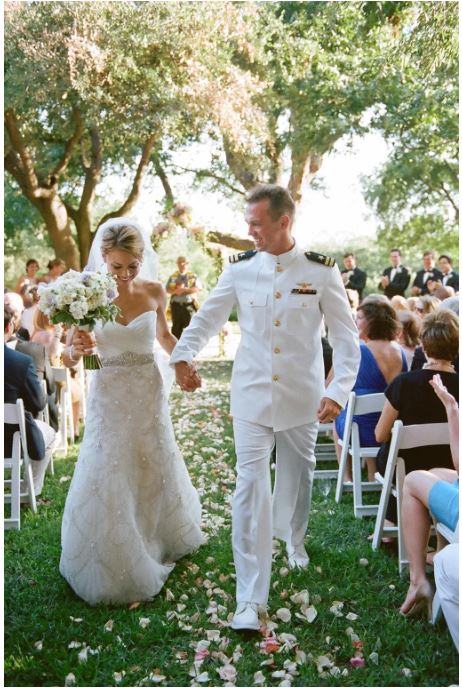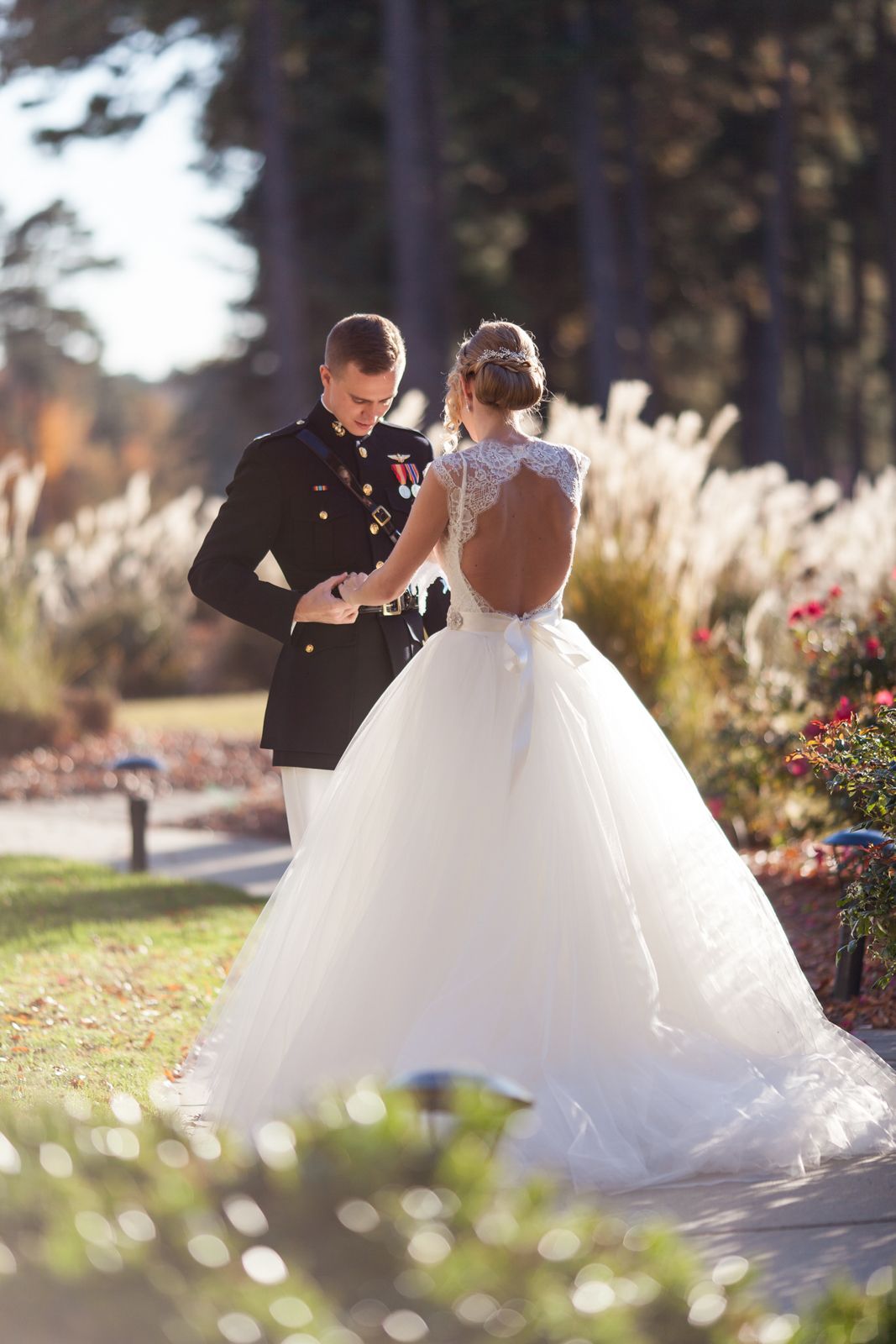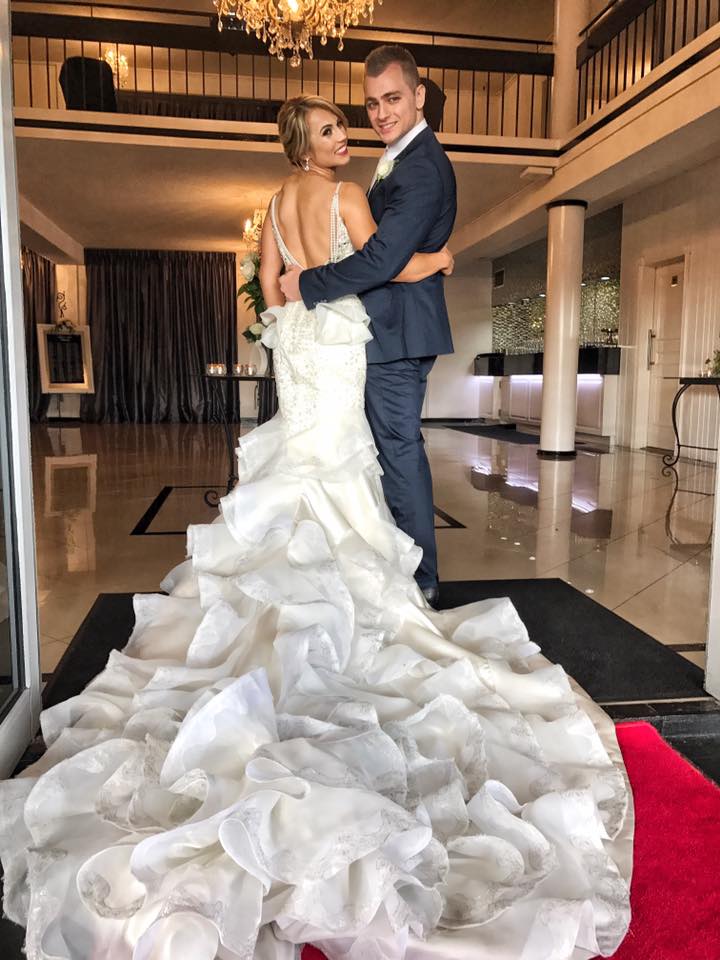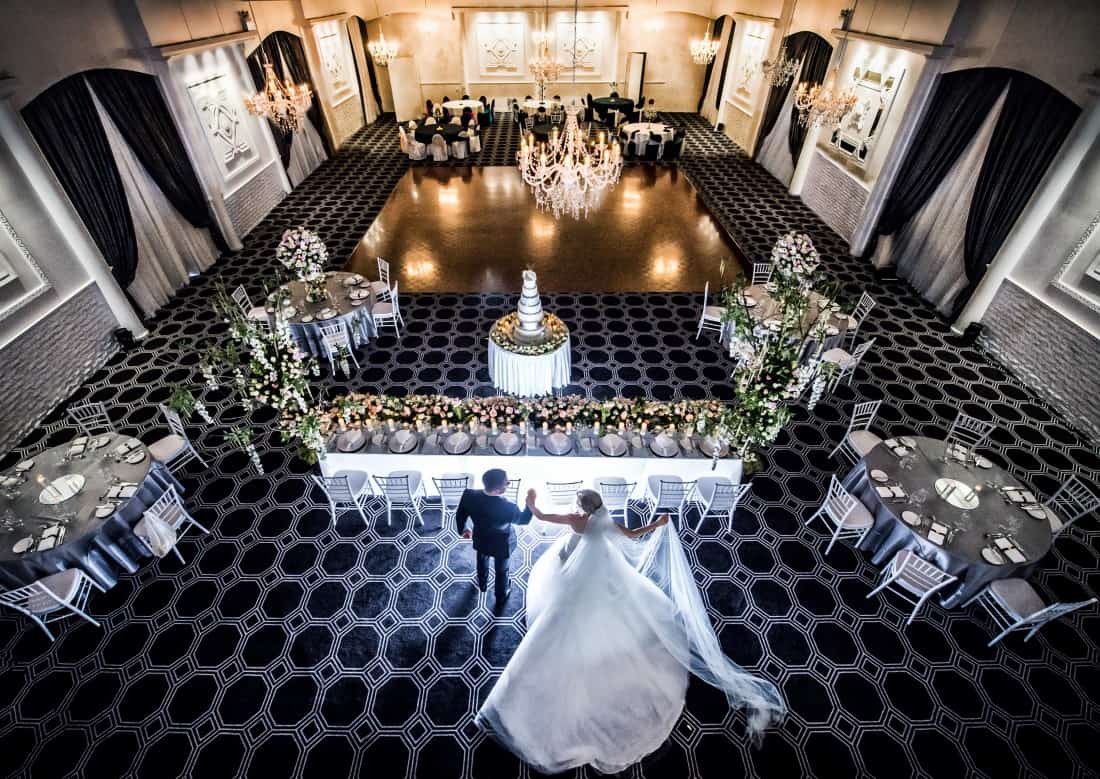Planning a military wedding involves unique traditions, customs, and logistical considerations that set it apart from a typical civilian ceremony. Whether one or both partners are in the military, these weddings are steeped in tradition and often include elements such as a sabre arch, military dress uniforms, and patriotic themes.
A military wedding celebrates the union of two individuals and honours their service and commitment to their country. Therefore, attention to detail and understanding military protocol are crucial for a meaningful and respectful ceremony.
When planning a military wedding, it’s essential to consider the specific branch of service, as traditions can vary slightly between the Army, Navy, Air Force, Marine Corps, and Coast Guard. From the selection of attire to the arrangement of the ceremony and reception, each element should reflect the values and customs of the military.
Accommodating service members’ schedules and navigating potential deployments or relocations requires flexibility and advanced planning. By embracing these unique aspects and incorporating them into the wedding day, couples can create a celebration that honours their love and service.
Let’s Get Straight to the Point
Planning a military wedding involves unique traditions and careful attention to military protocols. These weddings often occur in military chapels or on academy grounds, incorporating elements like the sabre arch, military uniforms, and patriotic themes. Key considerations include choosing a suitable venue, coordinating with military chaplains or civilian officiants, and arranging seating based on rank.
The Arch of Sabres ceremony, where commissioned officers form a protective arch with swords, is a distinctive feature, as is the cake-cutting tradition using a sabre. Each element of the wedding, from attire to ceremony order, should reflect military values and customs, honouring the couple’s service to their country while celebrating their union.
1. Choosing The Venue: Consider A Military Chapel Or Academy Grounds
- Military Chapels: Many military couples choose to wed in a military chapel or on academy grounds such as those of the Army, Navy, or Air Force. If you prefer a different venue, ensure you check the regulations and get approvals early.
- Advance Planning: If you decide on a military chapel, begin planning at least a year. Typically, this involves sending a letter of request to the pastor’s office.
- Chapel Availability: For example, the Air Force Academy offers Protestant, Jewish, and Catholic chapels, each with specific eligibility criteria. Only graduates, dependents of graduates, officers, enlisted personnel stationed at the academy, and active and retired staff are eligible to wed at these locations.
- Contribution: While using the chapel may not require a fee, couples are usually expected to contribute to the chapel’s operating fund.
- Decorations: Chapel Altar Guilds often coordinate the flowers, candlesticks, and other decorations. If not provided, the couple is responsible for these items.
- Reception Options: Military receptions can be held at officers’ or enlisted clubs on the base or at more traditional venues like hotels or restaurants.
2. Officiant Selection: Identify Potential Officiants
- Chaplain Coordination: Once you have booked the chapel, you will meet with the chaplain to discuss ceremony details. Pre-marital counselling sessions may also be required.
- Civilian Clergy: If you wish to have a civilian clergy member co-officiate, arrange this in advance and inform both officiants.
- Fees: Military chaplains do not charge fees as they are commissioned officers. However, it is customary to offer compensation to civilian clergy members.
3. Seating Arrangements: Guests Should Be Seated In Order Of Rank
- Honourable Seating: Special attention must be given to seating arrangements. Officers of the rank of lieutenant and colonel should be seated in places of honour at both the ceremony and the reception.
- Commanding Officer: The commanding officer of the bride or groom should also be given a prominent seat.
- Military Guests: Seat military guests according to their ranks, ensuring the couple’s superior officers and their spouses are positioned appropriately if the parents cannot attend.
4. Keep To The Military Wedding Uniform
- Groom’s Attire: Military grooms are expected to wear full dress uniform. Depending on his branch, the groom may carry a sabre or cutlass paired with white gloves if he is a commissioned officer.
- Bride’s Positioning: To avoid interference with the sword, the bride traditionally stands to the groom’s right at the altar, differing from civilian weddings where she usually stands to his left.
- Bride’s Attire: If the bride is also a service member, she can wear her uniform or a white bridal gown. She may carry a bridal bouquet as per tradition.
5. The Military Wedding Ceremony Of The Arch Of Sabres
- Commissioned Officers: This ceremonial arch is traditionally reserved for commissioned officers and symbolises protection for the newlyweds.
- Formation: After the ceremony, ushers line up on either side of the aisle, drawing their sabres or cutlasses at the head usher’s command to form an archway.
- Civilian Participation: While military groomsmen typically perform the arch, civilian ushers and other officers may also be included in the formation.
- Location: The arch is usually formed at the chapel’s entrance, weather permitting, or inside the venue.
- Protocol and Variations: Although the arch is a key element of military weddings, the exact procedures and commands vary by service branch. Officers may deviate from protocol by introducing the couple or lowering the final sabres for a kiss. A Marine Corps tradition, now adopted by other branches, involves the last sabre bearer tapping the bride on the shoulder and welcoming her to the service.
Sabre And Sword Etiquette
- Eligibility: Only commissioned officers can carry and use sabres or swords in this ceremony. The Marine Corps allows NCOs to participate as well.
- Number of Officers: Typically, six to eight officers form the arch. The chief usher gives commands such as “Center face” (to form parallel lines) and “Arch sabres” or “Draw swords” (to raise the blades).
6. Cake Cutting Tradition: Cutting The Cake With A Sabre
- Ceremonial Entry: Sabre or cutlass carriers enter the main reception area, forming another arch under which the bride and groom walk.
- Cake Cutting: The groom then unsheathes his sabre, placing his hands over the bride’s as they cut the first slice of cake together, adding a military touch to this timeless wedding tradition.
7. The Receiving Line: Traditional Receiving Line Protocol
- Procession Order: In keeping with military tradition, the groom, dressed in uniform, leads the receiving line ahead of the bride.
- National Symbols: National flags and colours are often displayed prominently behind the receiving line, underscoring the patriotic nature of the ceremony.
Military weddings are steeped in tradition and protocol, often in military chapels or academy grounds. Planning for such a wedding should start well in advance, carefully considering venue selection, officiant coordination, and uniform regulations.
The Arch of Sabres, cake cutting with a sabre, and rank-specific seating are unique elements that set military weddings apart from civilian ceremonies. These customs honour the couple’s commitment to each other and their dedication to serving their country.
Planning a military wedding involves more than choosing a venue; it requires adhering to traditions and protocols that reflect the couple’s service and commitment. Every detail, from the venue to the cake cutting, is an opportunity to honour the military heritage and create a memorable, respectful celebration.




